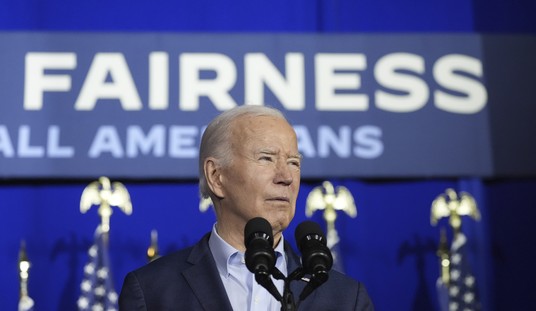By the time of his death in 2005 at the venerable age of 98, Philip Johnson was arguably America’s best known architect, having designed his famed “Glass House” in 1949, and worked with Mies van der Rohe on Mies’s Seagram Building a few years later. The former was declared a National Historic Landmark in 1997; the latter dubbed “Building of the Millennium” by the New York Times.
But Johnson’s puckish demeanor in his later years, which earned him decades of good cheer from fellow Manhattan elites, hid a dark journey through the liberal fascist politics of the 1930s, which culminated in his cheering on the Nazis as they marched through Poland in 1939. “We saw Warsaw burn and Modlin being bombed. It was a stirring spectacle,” he would write to a friend at the time.
At the start of the 1930s, Johnson was an admirer of the socialist-leaning architects of Germany’s Bauhaus, as he founded the newly born Museum of Modern Art’s architectural department, and helped put modern architecture on the map in the US. Apparently after witnessing a Hitler rally in Potsdam in 1933, Johnson was immediately attracted to the Nazis. That moment sent Johnson on a seemingly strange journey: shortly thereafter, he would leave MoMA to seek employment with first Huey Long and then Father Coughlin, before ultimately winding up cheering the Nazis on at the start of WWII.
During that same period though, while Johnson openly admired the Nazis, he befriended the last director of the Bauhaus, Mies van der Rohe, even as the Nazis were shuttering the design school’s doors. Returning to MoMA in the 1950s and establishing himself, via his famed Glass House, as a known architect in his own right, as Hilton Kramer noted in the mid-1990s, and Anne Applebaum shortly after Johnson’s death, Johnson did a near-thorough job of tossing his radical past down the memory hole. At the least, most of his fellow Manhattan elites didn’t lose too much sleep over it.
And yet, comparing Johnson’s past with the lost history of the 1930s described in Jonah Goldberg’s Liberal Fascism, in retrospect Johnson comes across as a sort of dark version of Woody Allen’s Zelig character, appearing alongside several of the fascist left’s most important figures in both the US and Europe during the Depression.
Script follows on the next page.
Hi, this is Ed Driscoll. Welcome to Silicon Graffiti.
At the time of his death in early 2005, at the venerable age of 98, Philip Johnson was arguably America’s best-known architect. If you live in America and Bauhaus did come to your house, you can largely thank Johnson, who almost single-handedly created the architectural department of New York’s Museum of Modern Art shortly after its founding in 1929. But in the 1930s, Johnson was sort of the real life version of Woody Allen’s Zelig character, moving fluidly in the radical leftwing politics of the era, from socialism to national socialism to populism and back to national socialism in less than a decade, a period that he later almost entirely airbrushed from his past.
Well, at least while he was alive; here’s how Charlie Rose introduced him on the occasion of his 90th birthday:
RUN CLIP
Jonah Goldberg’s best-selling Liberal Fascism spends a considerable amount of time opening up the memory hole and shining a light on the lost history of the 1930s, a time when virtually all of history’s “Isms”–communism, fascism, populism, socialism, and national socialism–were interconnected. And highly seductive to the intellectuals of the time, as Glenn Beck noted when he interviewed Goldberg in February on CNN’s Headline News channel:
CLIP OF BECK QUOTING GEORGE BERNARD SHAW AND H.G. WELLS
But Wells and Shaw were far from the only artists of the time who oscillated quite easily from socialism to National Socialism. Philip Johnson was another. He did help transform his friend, Germany’s Mies van der Rohe, the last director of the Bauhaus before the Nazis shut its doors, into the most influential modern architect in America, after Mies fled from the Nazis in 1937.
But Johnson himself was also surprisingly comfortable with the Nazis themselves during this same decade, even as they were persecuting artists whose aesthetics didn’t mesh with their own, such as Mies.
In his 1995 profile of Johnson for Commentary magazine, Hilton Kramer wrote that in the 1920s, Johnson, already then quite a wealthy young man due to investments he inherited from his father, discovered the writings of Friedrich Nietzsche while at Harvard, which would come to dominate his political thinking. In 1932, he published, along with Henry-Russell Hitchcock,Jr., The International Style: Architecture Since 1922, the book that accompanied the first major exhibition of modern architecture in the US, and still in print over 75 years later.
The combined exhibition and book put modern architecture on the map in the US, and dramatically boosted the reputations of the European avant-garde architects whose works were featured, including France’s Le Corbusier, and Germany’s Marcel Breuer, Walter Gropius, the founder of the Bauhaus, and especially Mies, whom Johnson would soon hire to design his New York apartment, a photograph of which was featured in the book.
But one year later in Germany, Hitler came to power, and Johnson, who spoke German fluently, felt his own Nietzschian urges flowing. As Hilton Kramer wrote in 1995, quote, “There is no other way to put it: Johnson fell in love with the Nazi regime”, unquote, apparently after witnessing a Nazi rally in Potsdam, while traveling through Europe in 1933. That Hitler was a sworn enemy of all modern art, and as a failed architect, harbored a special hatred for modern architecture, seemed to do little to phase Johnson. “If in the arts [Germany] sets the clock back now, it will run all the faster in the future,” he wrote at the time.
A year later, when Johnson returned to the States, he resigned his post as director of the nascent Museum of Modern Art’s architectural department, and moved from fascism to populism, attempting to join up with Louisiana’s Huey Long. It’s actually not that big of a swing; Nazism is a sort of populist form of Marxism; both totalitarian regimes led by dictators. And as Jonah Goldberg noted in Liberal Fascism, Long said at the time:
“There is no dictatorship in Louisiana. There is a perfect democracy there, and when you have a perfect democracy it is pretty hard to tell it from a dictatorship.”
Failing to connect with Huey Long, Johnson moved on to…Father Coughlin in early 1936. As Anne Applebaum wrote in the Washington Post, shortly after Johnson’s death, in one of the few MSM articles to strongly make the connections:
During that period, Coughlin, gave a speech in which he told his audience, “Our Government still upholds one of the worst evils of decadent capitalism, namely, that production must be only at a profit for the owners, for the capitalist, and not for the laborer.
And in 1938, two years after Caughlin’s presidential challenge to FDR fizzled, Johnson returned to Nazi Germany. In 1939, he wrote to a friend:
“I was lucky enough to get to be a correspondent so that I could go to the front when I wanted to and so it was that I came again to the country that we had motored through, the towns north of Warsaw…. The German green uniforms made the place look gay and happy. There were not many Jews to be seen. We saw Warsaw burn and Modlin being bombed. It was a stirring spectacle.”
A year later, Johnson apparently applied for a job at the German embassy in Washington. Something must have gone went horribly wrong, because almost immediately thereafter, Johnson returned to Harvard and enrolled as a student in the school of architecture, at age 33.
Having the money to fund his own projects, Johnson quickly established himself as both an known architect in his own right, designing his famed Glass House in 1949, based largely on Mies van der Rohe’s Farnsworth House, which Mies had already been designed several years earlier, but his client had not yet built.
But it would be Johnson’s role as an architectural impresario that he really made his mark, having helped the advance the careers of numerous up and coming architects. In From Bauhaus to Our House, Tom Wolfe notes that Johnson’s AT&T Building in 1984, now owned by Sony, did much to establish the architectural style of postmodernism.
30 years earlier though, in the mid-1950s, Johnson would team up with Mies van der Rohe, on Mies’s Seagram Building, one of the most influential modernist buildings of the 20th century. A few years ago, the BBC unearthed some footage of Susan Sontag visiting Johnson’s office in the Seagram building in the late 1950s or early 1960s.
RUN CLIP
There’s some amazing retroactive synchronicity at work here: In 1975, Sontag would write an essay titled “Fascinating Fascism” for the New York Review of Books, on Leni Riefenstahl’s attempts to reclaim her reputation after her tour of duty as Hitler’s favorite documentarian. Would Johnson have been happy to one of Hitler’s architects, alongside Albert Speer? As Applebaum noted, Johnson was asked in 1993 whether he would have built buildings for Adolf Hitler in the 1930s. Johnson replied, “Who’s to say? That would have tempted anyone.”
But Johnson had much better luck expunging his lost decade than Riefenstahl would: By the time of his obituary in the New York Times, Johnson’s 1930s political misadventures through the various circles of the far left warranted less than a paragraph midway through his long and reverent obituary. Naturally, the Times credited his dalliances with Nazism, Huey Long and Father Caughlin to a “deeply mistaken detour into right-wing politics.”
In 1987, shortly before she passed away, Marga Barr, the wife of Alfred H. Barr, Jr., the founding director of the Museum of Modern Art was asked by Hilton Kramer what she thought of Johnson’s most recent works, including his then recent proposal to redesign Times Square. “I feel about Philip today the way I would feel about a beloved son who had gone into a life of crime”, she told Kramer.
For Silicon Graffiti, I’m Ed Driscoll.
# # #









Join the conversation as a VIP Member